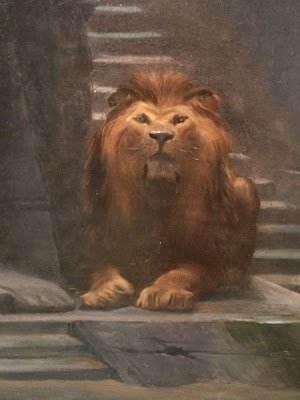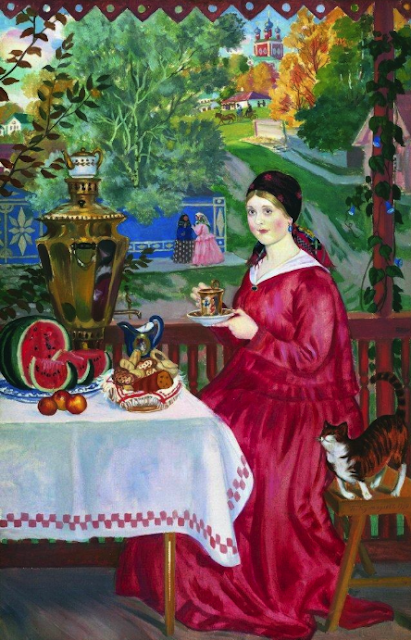The bride and I just returned from a wonderful vacation in France where we were privileged to see both the Louvre and Orsay Museums. Of the two, the Orsay was much better--less crowded, could get closer to the paintings, more cats.
Image credit Gary of image in the Orsay Museum, The Fiancee of Belus, Henri Mott, 1885, oil on canvas, 71" x 49", held by the Orsay Museum Paris, France.
And the close-up of the (rather large!) kitty at the right front:
Our friends at Wikimedia Commons provides an electronic image plus more here. Apparently the theory behind this image (per Wikipedia) is thus:
...based on a fanciful Babylonian ritual associated with deity Belus (Bel). According to that ritual, Bel was offered a girl who sat on the lap of the Bel's statue overnight, and then was replaced by another, all of whom were the winners of daily beauty contests.
As I have often remarked about various paintings that I have been fortunate enough to see in person, my impression from standing right in front of the wonderful painting was its size and detail. It's nearly 6 feet high and 4 feet wide. One can never tell much about size from the image in a coffee table book, unless one reads the narrative to ascertain the true size. On the small side, I have been blown away by paintings measuring scant inches wide and tall; similarly, I've seen some truly giant canvases. In either extreme, when you see a painting repro in a book, you simply cannot tell how big the painting really is.
At any rate, Motte nailed it with the lion: regal, powerful, watchful, perhaps even disdainful. On the macro scale, the overall image is quite interesting: muted and darkened background with a strikingly bright focus upon the poor young lady on Belus' lap. She no doubt is believing that her being singled out is a most dubious honor.
[Gary note: With my Cats in Arts posts, I encourage you to scope out the art appreciation site Artsy (I have no financial interest in the site, I just like it), where you can explore many aspects of the world of art. You'll certainly be entertained and enlightened!]
































